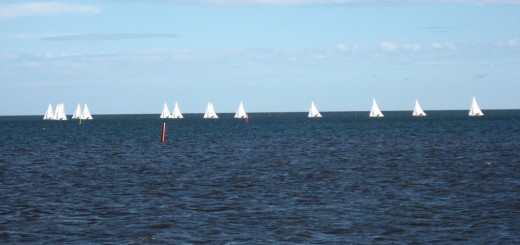Iceland’s Lake Mývatn Supports Thirteen Duck Species, Rare Algae
0
Lake Myvatn. (Credit: Flickr User Arian Zwegers via Wikimedia Commons)
Midges, or flies, are the namesake of Iceland’s Lake Mývatn. In Icelandic, mý means midge, and vatn is lake. In the summer months, areas around the lake are inundated with the insects.
More prominent, however, are Mývatn’s ducks – it supports 13 different species of the quacking fowl. Most are migratory and arrive in late April or early May each year.
These include the Gadwall, Mallard and Red-breasted Merganser. Another is the Barrow’s Goldeneye, the only nearctic duck in the region. Its population numbers a few thousand near the lake and relies almost exclusively on Mývatn and its surrounding systems for survival.

A male and female Barrow’s Goldeneye swim in Lake Myvatn. (Credit: Flickr User Olafur Larsen)
With the abundance of ducks on Mývatn, locals celebrate an annual harvest of their eggs. Tradition dictates that human scavengers leave at least 4 duck eggs in each nest to ensure populations remain sustainable.

Marimo (Cladophora ball) in Lake Akann, Japan. (Credit: Wikimedia Commons User Andy_king50)
Beyond Mývatn’s birds, the lake is one of a few sites in the world that supports the growth of Marimo, a type of filamentous green algae. Marimo builds up in round globs, and is also known as “Cladophora ball” or “moss ball.”
Lake Mývatn is a shallow eutrophic lake formed by a volcanic eruption more than 2,000 years ago. It is fed by spring water and drains to the Laxa River that empties into the Greenland Sea. Currently the fourth largest lake in Iceland, it is dotted by volcanic islands and surrounded by craters and hot springs.













